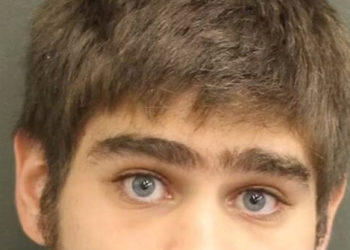How to describe a significant part of the audience’s response to Heathers: The Musical?
Think Beatles-level hysteria—collective shrieking, whooping, high-volume, delirious adoration. Plus, for many it’s also a night of cosplay, so if you show up in knee-high socks, plaid, and ruffled, mini mini-skirts you will be among friends. Whatever Heathers: The Musical (New World Stages, booking to Jan. 25, 2026) is as a piece of theater, it is being fiercely embraced by its dedicated fan base as a phenomenon.
One thing it isn’t—for debatably good and ill—is Heathers, the movie. That 1989 film, with a scythe-sharp screenplay by Daniel Waters and starring Winona Ryder and Christian Slater, is a dark-to-the-last-frame satire of cruel and dysfunctional high school life, which set the template for movies like Mean Girls and pop culture’s general recasting of the American high school as a hellhole of tribal bullying, rivalries, and vicious one-upmanship.
The musical—with a book, music and lyrics by Kevin Murphy and Laurence O’Keefe, and directed by Andy Fickman—skews deliberately lighter and bouncier, while remaining true to the significant story beats of Waters’ screenplay.
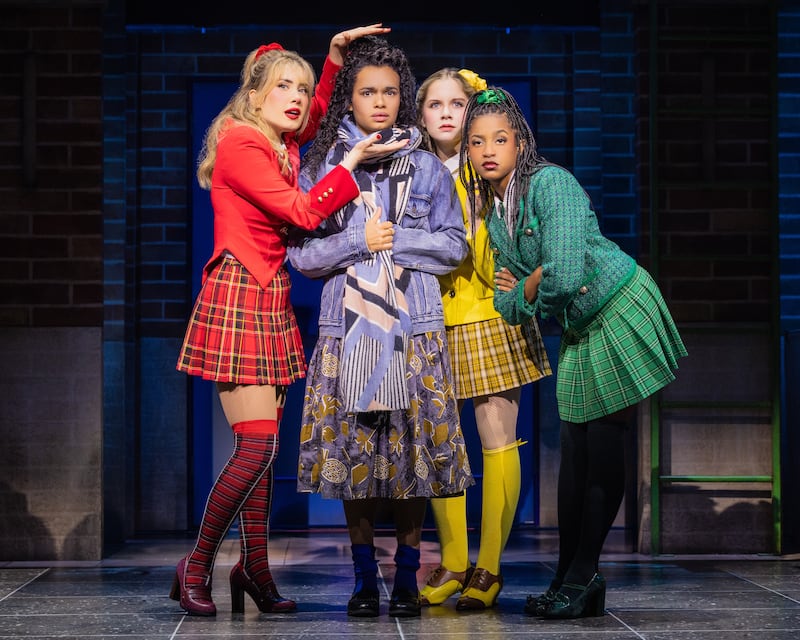
Having previously played in New York, London, Los Angeles, and Australia, it blares in bold 72-point what the 1989 film—bookended by its distinctive renditions of “Que Sera, Sera” by Syd Straw and Sly and the Family Stone—slyly told in 10-point. It also retains some of its best lines like, “My teenage angst bulls— has a body count.”
The problems in Heathers: The Musical—and these are only problems if you really liked the movie; our audience was clearly and very loudly into the show—are ones of story, character, and tone. (It is also, at two and a half hours, at least half an hour too long.) The performers themselves are terrific, belting out numbers that match the brightness of the adaptation, much akin to the up-tempo rock/pop of popular musicals aimed at a younger theater-going audience, like & Juliet and Six.
Its opening song, “Beautiful,” led by Ryder’s original character, Veronica (Lorna Courtney), notes that “this ain’t no school, this is the Thunderdome,” with the rest of the cast whispering insults like “Freak,” “Slut,” and “Homo.” College, Veronica says, will be paradise, “if I’m not dead by June!”
This, as Heathers fans know, is prophecy streaked with irony, as death soon starts to stalk the halls of Westerburg High, thanks to the actions of loner student J.D. (Casey Likes, last seen in Back to the Future on Broadway). In both movie and musical, the long coat-clad J.D. is a shadowy forerunner of the real-life school shooters soon to lead the nation’s newscasts, and in the musical the excellent Likes plays him with a magnetic, menacing anti-charm, echoing what Slater brought to the movie.
Introduced while reading a copy of Baudelaire’s Flowers of Evil, J.D. sees in Veronica a corresponding teenage isolation, and decides to exploit hers for his own murderous ends.
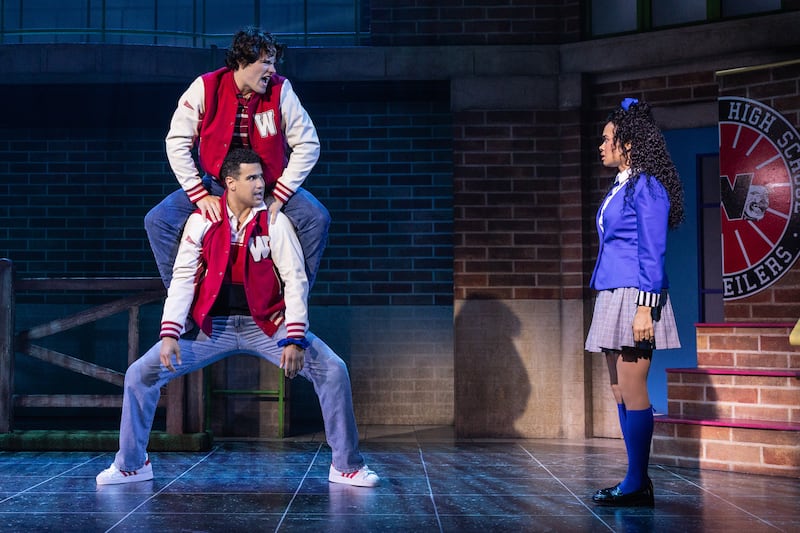
“I don’t know what your problem is, but I bet it’s really hard for you to pronounce,” J.D. says to the menacing but haplessly dumb jocks Ram Sweeney (Xavier McKinnon) and Kurt Kelly (Cade Ostermeyer), before a fight breaks out, played out in wittily directed slo-mo.
The Ohio school’s most intimidating clique is the Heathers—three girls who share the name, with one “mythic bitch” at its apex. McKenzie Kurtz excels in the “Chandler” role, with side-eye and rictus-smiled threat her preferred modes of communication.
The trio’s appearance (with Olivia Hardy as successor-to-the-throne Heather Duke and Elizabeth Teeter as weaker-link Heather McNamara), bathed in the light of their respective primary-colored outfits, elicits the first full-throated audience shriek of the evening. A similar wall of sound erupts when they appear later, croquet mallets in hand (sets and costumes are by David Shields, with Siena Zoë Allen).
In the movie, Chandler is a subtly menacing bully and dictator. In the musical, those same characteristics have been given a “yass queen” makeover for a modern-day young audience. She’s a comedy monster—and an extremely funny one thanks to Kurtz. The number “Candy Store” clearly lays out the power of the Heathers’ presence in the school.
When Veronica gets a makeover to look like the Heathers, the audience goes wild in a way an on-stage makeover usually elicits—even if, in terms of the story behind this particular makeover, there is nothing to cheer. Somewhere between 1989 and 2025, between movie and musical, the story and meaning of Heathers has become subservient, even lost, to its well-known signifiers. (Corn nuts, present and correct!)
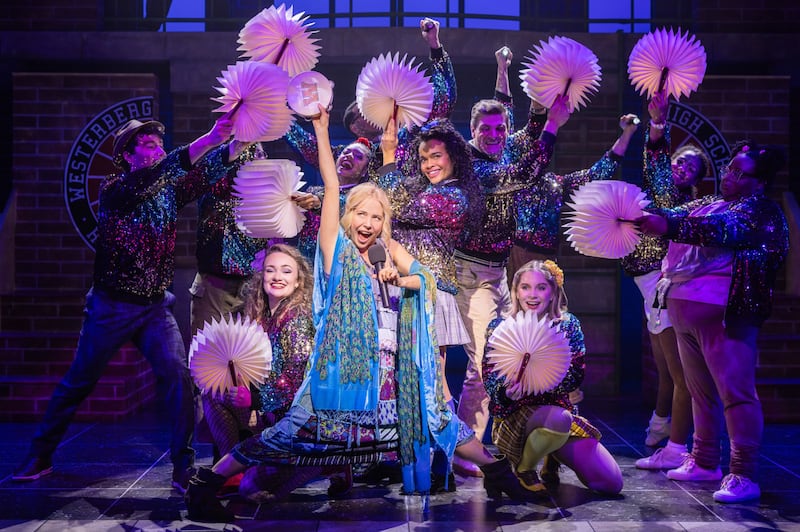
In the spirit of delivering a good time for those fans whooping and dressed-up, the musical provides raucous pleasure, even if that means it falters when it comes to Heathers’ more serious moments, like the bullying of Martha Dunnstock (Erin Morton). The musical wants to honestly observe the misery caused to Martha, who for much of the musical is sad, mocked, belittled, and with a target on her back.
It comes as a surprise—a happy one—when she is given an uplifting song later in the show, an affirmation of who she is and a vision of a world of decency and love she cleaves to, only for us then to learn afterwards she has tried to kill herself. In the movie, the latter act made total, terrible sense; in the musical, less so.
Tonally, the show seems nervous of such serious moments. A scene where Veronica faces the possibility of some kind of assault by Ram and Kurt too-quickly devolves into half-hearted physical comedy.
Veronica suffers what many lead characters, particularly female, in musicals become—pigeonholed into earnestness while all around her dig into more extreme, and inevitably more colorful characters. In the movie, her complicity with J.D., her feelings about the Heathers, her own inner anger and desire for revenge, are ambiguous fulcrums Ryder evokes skillfully; in the musical, they are neatened into a character arc where Veronica simply must learn not to like bad boys.
Her big empowerment song riffs off that key 1980s anti-drugs catchphrase, “Just say no”, repeated as a self-instructing incantation that it’s, umm, a bad idea to be seduced by a serial killer boyfriend, no matter how sexy he is. Got it—but the musical doesn’t sketch out the inner path Veronica takes to realize it.
Other extrapolations and expansions from the movie are executed better. The ongoing joke, eventually played against them in their own deaths, are that Ram and Kurt are gay.
McKinnon and Ostermeyer play the sexed-up, bro-buddy faultline with a subtly witty emphasis throughout, capped by their dads—played by Ben Davis and Cameron Loyal—belting the number, “My Dead Gay Son,” which transforms a brief comedic moment from the movie into a full-on, convention-shredding Book of Mormon-esque spectacular. Kerry Butler’s empowerment-spouting teacher Ms. Fleming, whose hippyish garb barely conceals a desire for the spotlight, has a similar number.
The musical makes similarly very funny hay out of the deaths of the jocks and Heather Chandler, all three transformed into undeserving, posthumous heroes. As ghosts, they become Veronica’s worst nightmare as she tries to extricate herself from J.D. Chandler is particularly overjoyed by her burnished reputation from beyond the grave: “I’m bigger than John Lennon.”
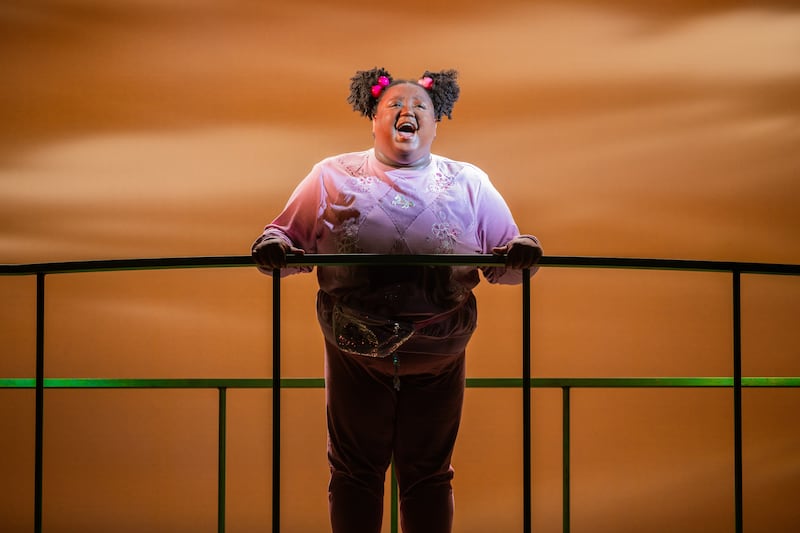
Heathers: The Musical plays in the same sandbox of serious issues—bullying, suicide, homophobia—as the movie did, free of the PSA signposting such topics now come saddled with. However, where the movie ultimately retains its satirical edge to the end, the musical neuters itself with Veronica’s go-girl assertion of personal goodness and a “let’s all get along” song-and-dance finale which feels misconceived and cloying even within the confines of the musical’s darkness-avoidant script.
In the movie, when Ryder announces that “war is over” and a “brand new sheriff’s come to town,” she is barely standing, blank-eyed, bloodied and disheveled from her final confrontation with J.D. Heather Duke rejects her overtures to make friends. We last see her tentatively reconnect with Martha.
In the musical, the ensemble’s close-out joyfulness is more uniting, and Duke is cajoled into accepting Veronica’s friendship. It doesn’t feel like the right ending for Heathers, but it is absolutely the right ending for this musical adaptation—and for those fans whose whooping for the cast emerging from New World Stages’ stage door at the end of the show echoes long and loud down 50th Street.
The post Audiences Are Losing Their Damn Minds at ‘Heathers: The Musical’ appeared first on The Daily Beast.



